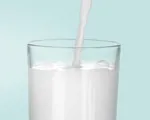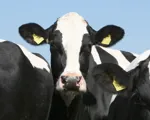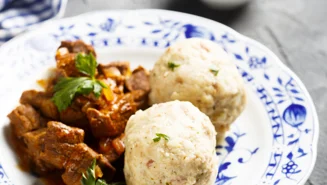
If you’re hitting the gym to build muscle or just keep fit, making milk part of your daily nutritional plan could be beneficial. From bone to muscle health, milk is full of nutrients that can benefit your body by providing a source of protein, calcium, vitamin B2 and B12, and could be an easy way to get extra protein into your daily diet.
From regular (and delicious) cow’s milk to low fat cheese and protein-enriched yogurt, there are many options that could help you with your muscle-building plans.
How does milk help muscle growth?
Many people who work out in the gym to gain muscle have protein shakes or supplements to help promote muscle growth after a workout. Naturally, these shakes have a lot of added protein and other nutrients – something milk contains naturally. So, is milk good for building muscle? Milk is a good source of protein along with many other nutrients, including calcium, phosphorus, potassium, iodine, vitamins B2 and B12, making it a worthwhile option to aid muscle growth and maintenance.
Getting more protein into your diet can help with muscle growth, so drinking cow’s milk and other dairy products as part of your everyday meal planning can be an easy way to increase the amount you consume.
What milk is best for building muscle?
When it comes to deciding if whole milk or semi-skimmed is better for protein and muscle building, there’s actually very little difference between them. Semi-skimmed and skimmed milk contain fractionally more protein than whole milk, but not enough to make a worthwhile difference when choosing a milk for building muscle.
While it won’t make much difference to your protein intake which type of cow’s milk you choose, it’s worth thinking about the fat content of milk. The NHS recommends going for lower-fat milk to help maintain a healthy weight. You could also try Arla B.O.B, which is skimmed milk that tastes like semi-skimmed and has a higher protein content than regular milk.
You could also consider other dairy foods such as cheese, as cheddar or similar hard cheeses contain around 7.6g of protein per 30g, giving you another option to find ways to more protein into your diet. Protein-enriched yogurts such as Arla Protein can also provide a quick way to get a nutritional boost.
Why a balanced diet is key
As with most things in life, balance is key. It’s not possible to get everything we need from one single food source, and there aren’t any miracle foods that will give you all the answers, or a single perfect food for muscle growth. Whatever your fitness or body goals, a healthy, balanced diet should always be the foundation.
While you might increase or decrease certain foods depending on your goals, you’ll always get the best results with a healthy diet. This doesn’t mean every single meal needs to be perfectly balanced between all the food groups, but you should aim to balance your nutrition out over the day, or even a few days.
This means fruits and vegetables should take up around a third of your diet, eating at least 5 portions of a variety of fruit and vegetables per day. Another third should be devoted to starchy foods such as rice, potatoes, pasta, and bread. Wholegrain varieties will provide the healthiest options. Dairy is an important part of a balanced diet, providing a good source of protein as well as some vitamins as mentioned above, and calcium, of course. Lower fat options are the healthier choices here too.
For your main sources of protein, meat, fish, or pulses can provide everything you need in regards to getting enough protein, and sticking to unprocessed meats will give you the healthier option.
The last essential part of a balanced diet is fats, such as unsaturated oils like olive or vegetable oil, and you only need these in small amounts. You can find out more about eating a healthy and balanced diet in the NHS’s Eatwell Guide.
FAQs
Which milk is the highest in protein?
With cow’s milk there’s virtually no difference between whole, semi-skimmed, or skimmed milk in terms of protein content. You can also find a similar level of protein in lactose-free cow’s milk, such as Arla Lactofree. Some milk alternatives such as soy drinks can also have similar levels of protein, but others such as almond or coconut will have much less, so always check the label.
Can you mix milk with whey protein?
Mixing your whey protein into milk is a great option, giving you the benefit of the protein already present in milk, and adding a delicious taste! If you’re vegan or lactose intolerant you could use a milk alternative such as soy drinks or lactose-free milk, though this could mean less protein content. You should monitor how much protein you’re getting from different sources to make sure you’re getting enough – but also be careful not to get too much.







































